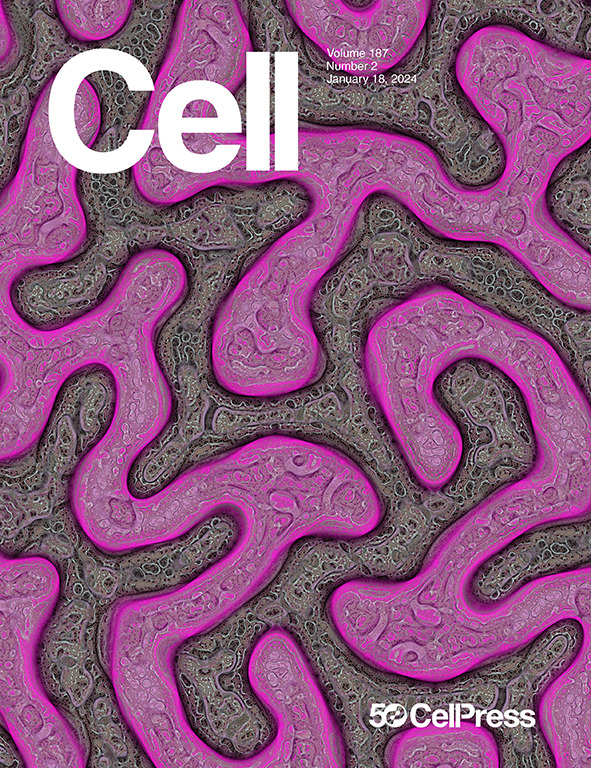Advancing protein evolution with inverse folding models integrating structural and evolutionary constraints
IF 42.5
1区 生物学
Q1 BIOCHEMISTRY & MOLECULAR BIOLOGY
引用次数: 0
Abstract
Protein engineering enables artificial protein evolution through iterative sequence changes, but current methods often suffer from low success rates and limited cost effectiveness. Here, we present AI-informed constraints for protein engineering (AiCE), an approach that facilitates efficient protein evolution using generic protein inverse folding models, reducing dependence on human heuristics and task-specific models. By sampling sequences from inverse folding models and integrating structural and evolutionary constraints, AiCE identifies high-fitness single and multi-mutations. We applied AiCE to eight protein engineering tasks, including deaminases, a nuclear localization sequence, nucleases, and a reverse transcriptase, spanning proteins from tens to thousands of residues, with success rates of 11%–88%. We also developed base editors for precision medicine and agriculture, including enABE8e (5-bp window), enSdd6-CBE (1.3-fold improved fidelity), and enDdd1-DdCBE (up to 14.3-fold enhanced mitochondrial activity). These results demonstrate that AiCE is a versatile, user-friendly mutation-design method that outperforms conventional approaches in efficiency, scalability, and generalizability.

结合结构和进化约束的反折叠模型推进蛋白质进化
蛋白质工程可以通过迭代的序列变化实现人工蛋白质进化,但目前的方法往往存在成功率低和成本效益有限的问题。在这里,我们提出了基于人工智能的蛋白质工程约束(AiCE),这是一种使用通用蛋白质逆折叠模型促进有效蛋白质进化的方法,减少了对人类启发式和特定任务模型的依赖。通过从反折叠模型中采样序列并整合结构和进化约束,AiCE识别出高适应度的单突变和多突变。我们将AiCE应用于8个蛋白质工程任务,包括脱氨酶、核定位序列、核酸酶和逆转录酶,跨越了数十到数千个残基的蛋白质,成功率为11%-88%。我们还开发了用于精准医学和农业的碱基编辑器,包括enABE8e (5-bp窗口),enSdd6-CBE(保真度提高1.3倍)和enDdd1-DdCBE(线粒体活性提高14.3倍)。这些结果表明,AiCE是一种通用的、用户友好的突变设计方法,在效率、可扩展性和通用性方面优于传统方法。
本文章由计算机程序翻译,如有差异,请以英文原文为准。
求助全文
约1分钟内获得全文
求助全文
来源期刊

Cell
生物-生化与分子生物学
CiteScore
110.00
自引率
0.80%
发文量
396
审稿时长
2 months
期刊介绍:
Cells is an international, peer-reviewed, open access journal that focuses on cell biology, molecular biology, and biophysics. It is affiliated with several societies, including the Spanish Society for Biochemistry and Molecular Biology (SEBBM), Nordic Autophagy Society (NAS), Spanish Society of Hematology and Hemotherapy (SEHH), and Society for Regenerative Medicine (Russian Federation) (RPO).
The journal publishes research findings of significant importance in various areas of experimental biology, such as cell biology, molecular biology, neuroscience, immunology, virology, microbiology, cancer, human genetics, systems biology, signaling, and disease mechanisms and therapeutics. The primary criterion for considering papers is whether the results contribute to significant conceptual advances or raise thought-provoking questions and hypotheses related to interesting and important biological inquiries.
In addition to primary research articles presented in four formats, Cells also features review and opinion articles in its "leading edge" section, discussing recent research advancements and topics of interest to its wide readership.
 求助内容:
求助内容: 应助结果提醒方式:
应助结果提醒方式:


